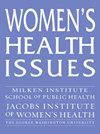Patterns of Antepartum Care in Ontario Before and During a Time of COVID-19 and Virtual Care: A Population-Based Study
IF 2.5
2区 医学
Q2 PUBLIC, ENVIRONMENTAL & OCCUPATIONAL HEALTH
引用次数: 0
Abstract
Background
The COVID-19 pandemic resulted in changes to the way health care was delivered, including expansion of virtual care. We aimed to understand differences in antepartum care delivery prior to and during the pandemic.
Methods
We conducted a population-based retrospective cohort study of people 15–50 years with an in-hospital birth at 20+ weeks’ gestation in Ontario, Canada, across two time periods: December 1, 2020–November 30, 2022 (pandemic), and December 1, 2017–November 30, 2019 (pre-pandemic). Outcomes were total number and timing of antepartum visits, ultrasounds, and acute care encounters. Outcomes were compared between cohorts, and between those who did and did not receive virtual care during the pandemic. Regression modeling was used to examine associations between pregnancy during the pandemic and rates of outcomes.
Results
A total of 228,551 pandemic and 218,126 pre-pandemic births were included. Median number of antepartum visits was 10 (6–13) in the pandemic period and 9 (4–12) pre-pandemic (standardized difference (StD): 0.32), corresponding to a relative rate of 1.21 (95% CI [1.20, 1.21]). Significantly more individuals in the pandemic had >11 visits, with no differences in acute care encounters and only a small increase in health care costs (<10%). Those in the pandemic cohort were more likely to have their initial visit during the first trimester (79.3% vs. 66.5%, StD: 0.29). Those receiving virtual care were more likely to live in an urban area and be more materially advantaged.
Interpretation
Pregnancy during the pandemic was associated with in an increased rate of ambulatory antepartum visits and increased care in the first trimester.
安大略省在COVID-19之前和期间的产前护理模式和虚拟护理:一项基于人群的研究
背景:2019冠状病毒病大流行导致卫生保健提供方式发生变化,包括虚拟医疗的扩大。我们的目的是了解大流行前和大流行期间产前护理的差异。方法:我们对加拿大安大略省15-50岁妊娠20周以上住院分娩的人群进行了一项基于人群的回顾性队列研究,跨越两个时间段:2020年12月1日至2022年11月30日(大流行时期)和2017年12月1日至2019年11月30日(大流行前)。结果是产前就诊、超声检查和急诊就诊的总次数和时间。结果在队列之间以及在大流行期间接受和未接受虚拟护理的人群之间进行了比较。回归模型用于检查大流行期间怀孕与结局率之间的关系。结果:共纳入228,551名大流行新生儿和218,126名大流行前新生儿。大流行期间产前就诊中位数为10次(6-13次),大流行前为9次(4-12次)(标准化差异(StD): 0.32),相对率为1.21 (95% CI[1.20, 1.21])。在大流行期间,有更多的人进行了bbb11次就诊,在急诊就诊方面没有差异,医疗保健费用仅略有增加(解释:大流行期间怀孕与产前门诊就诊率增加和妊娠早期护理增加有关)。
本文章由计算机程序翻译,如有差异,请以英文原文为准。
求助全文
约1分钟内获得全文
求助全文
来源期刊

Womens Health Issues
Multiple-
CiteScore
4.50
自引率
6.20%
发文量
97
审稿时长
32 days
期刊介绍:
Women"s Health Issues (WHI) is a peer-reviewed, bimonthly, multidisciplinary journal that publishes research and review manuscripts related to women"s health care and policy. As the official journal of the Jacobs Institute of Women"s Health, it is dedicated to improving the health and health care of all women throughout the lifespan and in diverse communities. The journal seeks to inform health services researchers, health care and public health professionals, social scientists, policymakers, and others concerned with women"s health.
 求助内容:
求助内容: 应助结果提醒方式:
应助结果提醒方式:


